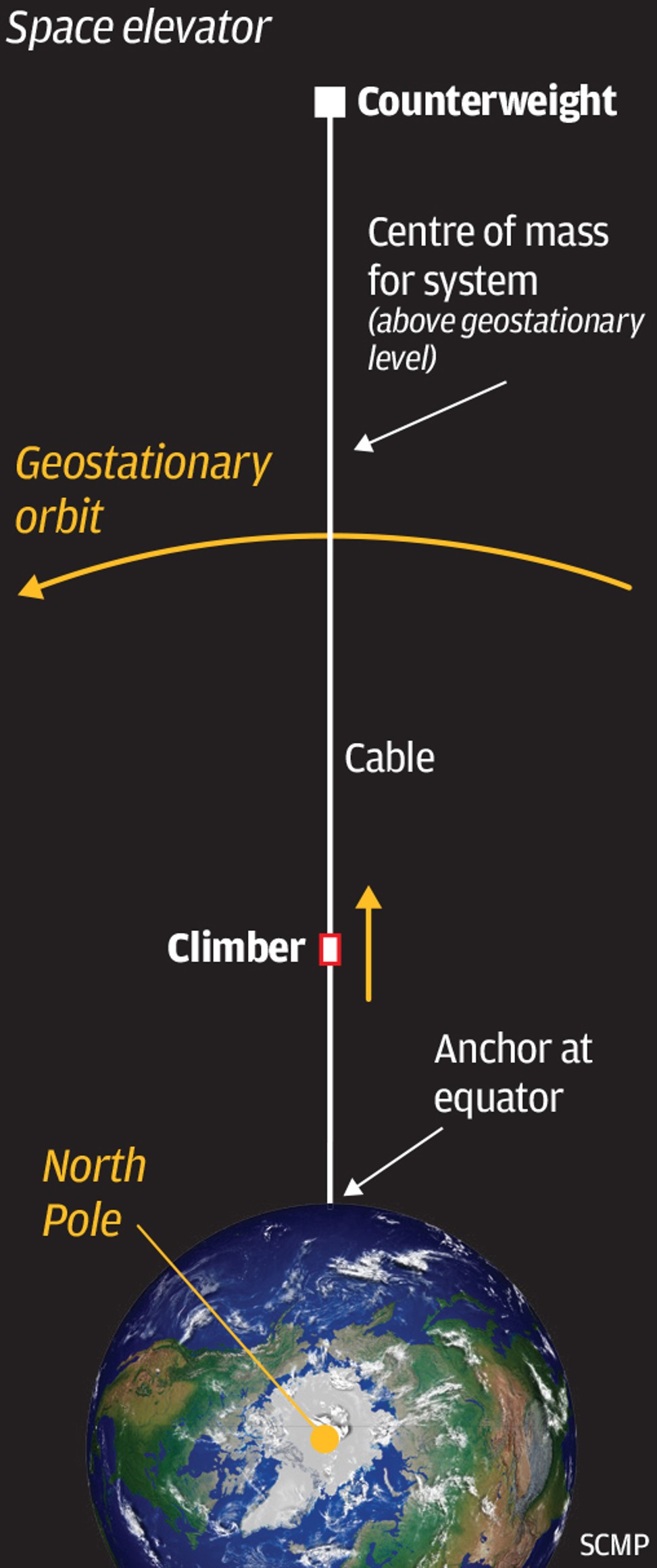Chinese scientists say they have the key to building a space elevator. A what?
- It may sound like science fiction, but the idea has been around for more than a century

Chinese scientists have developed a carbon nanotube fibre they say is strong enough to be used to build a space elevator. The Tsinghua University research team patented the technology and published part of their research in the journal Nature Nanotechnology earlier this year.
They said the fibre would be “in great demand in many high-end fields such as sports equipment, ballistic armour, aeronautics, astronautics and even space elevators”. But is a lift that could travel from the Earth into space actually possible, or is this just the stuff of science fiction?
A space elevator? Why?
“Although generations of research have made the rocket the most reliable form of propulsion ever invented … space vehicles are still grossly inefficient,” science fiction author Sir Arthur C Clarke wrote in The Fountains of Paradise in 1979.
The novel was the first popular account of an idea described by Russian scientist Konstantin Tsiolkovsky in 1895: the space elevator, a planet-to-space transport system just like the lifts we use every day but 300,000 times higher.
The appeal of a space elevator comes down to potentially finding a much cheaper way to travel to space. It costs more than US$160 million to launch a satellite for a single trip, but it is estimated that a space elevator could reduce that to less than US$2 million per person per trip.
How does it work?
The basic concept of a space elevator involves a cable anchored to the Earth’s surface and attached to a counterweight that is sent into space. If the cable is long enough – 36,000km (22,369 miles) or three times the Earth’s diameter – it will be pulled taut and upright by gravity and centrifugal force.
The theory is that a vehicle could then travel along the cable, propelled by the Earth’s rotational energy. It would revolutionise space travel, but designing and finding a strong enough material for the idea is extremely challenging.
Japan launched two satellites in September in the first experiment to study elevator movement in space, involving a mini-lift travelling along a cable from one satellite to another. It has yet to report the results. China has also carried out space tethering tests but did not reveal the details.
Who came up with the idea?
Rocket scientist Tsiolkovsky first set out the concept back in 1895, envisioning a celestial castle in space tethered to the Earth by a massive tower. Russian engineer Yuri Artsutanov took it further, developing a modern version of a space elevator based on Tsiolkovsky’s model.
American engineer and space scientist Jerome Pearson published the first technical paper on the concept in 1975, which gained attention among the scientific community. Four years later, sci-fi writer Clarke popularised the idea by drawing on Pearson’s design in his novel about the space elevator.
Scientists have since been trying to fine-tune the design and develop new materials to bring the concept closer to being a reality.
What makes building a space elevator so challenging?
The three biggest challenges that need to be overcome are buckling, dynamic stability and strength. Scientists believe they could control buckling and dynamic stability with the help of a satellite, in geostationary orbit at the right altitude, to ensure that the cable will not be pulled down by the Earth’s gravity or fly away.
But the strength problem has yet to be solved because a space elevator would need a material strong enough to withstand the massive weight and tension involved.
“The strength requirements are extremely demanding, but the required strength-to-weight ratio is theoretically available in perfect crystal whiskers of graphite,” Pearson wrote in his paper, published in the journal Acta Astronautica.

The super-light, ultra-strong cable required for a space elevator would need tensile strength – to withstand stretching – of no less than 7 gigapascals, according to Nasa. The Tsinghua team says their latest carbon nanotube fibre has tensile strength of 80 gigapascals.
Nicola Pugno, a professor of solid and structural mechanics at the University of Trento in Italy, said the Chinese researchers’ new fibre was promising.
“Having a strong mega-cable and maintaining its strength and flaw tolerance is the biggest challenge,” Pugno said. “The Nature Nano report [from the Tsinghua team] is a key step towards the solution … thus, never say never.”
